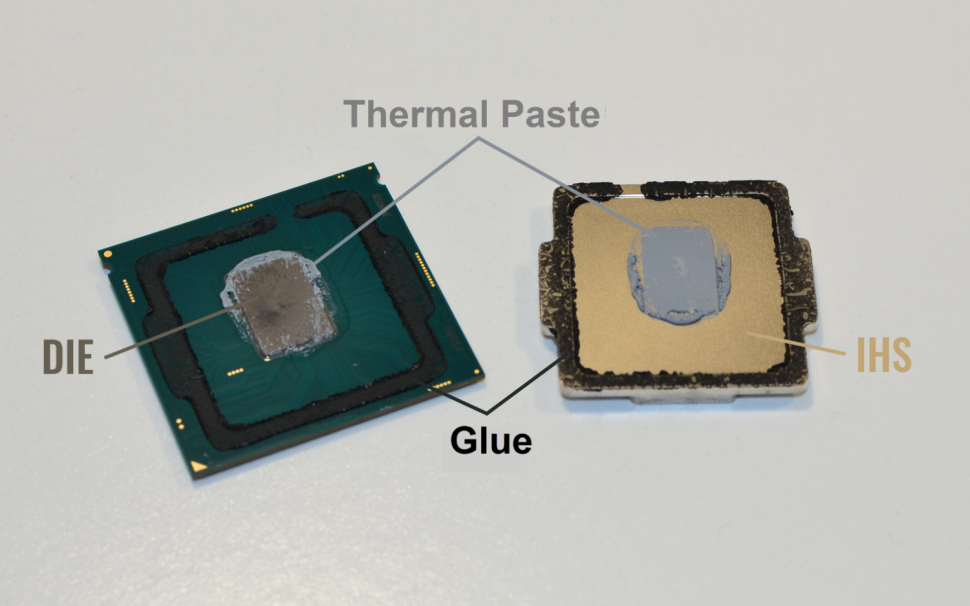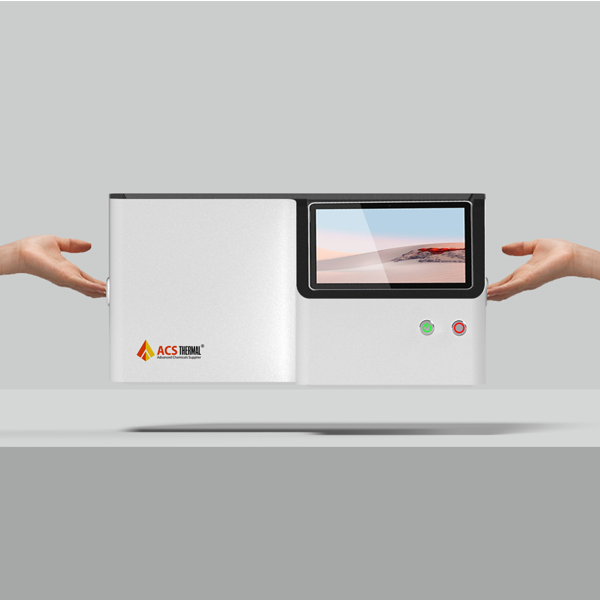-
Why Your Thermal Measurement Technique Matters
Jun 09, 2022 | ACS MATERIAL LLCMany of the advanced technologies that permeate our world today would not be here without thermal management systems founded on specially designed materials. Have you ever noticed your cell phone getting hot as you edit a video to post on social media, especially if your phone is a few years old? Maybe your neighbors recently installed double-paned windows on their house to save on energy costs. We can all agree how incredible it is that space shuttles do not burn up when re-entering the atmosphere thanks to the array of ultralight and extremely insulative tiles surrounding them.
Understanding these phenomena all comes down to thermal science, or the study of heat transfer. All materials have an inherent ability to either promote or inhibit the transfer of heat, which can be described by their thermal conductivity and diffusivity. Accurately measuring these properties is essential for engineering the next generation of technologies.
In this article, we will dive into why thermally engineered materials are so important, some basic concepts of thermodynamics, as well as various thermal property analysis techniques.
Thermal materials enable the next generation of technology
Pushing the limits on heat transfer is really a materials problem. Take for example 5G, which transfers data up to 100 times faster than the previous 4G generation of mobile platforms. Combined with device miniaturization, significant advances in thermal interface materials were needed to dissipate all that heat generated in the processor without compromising form, fit, or function. On the other hand, addressing the changing climate and growing population with “zero energy buildings” will ultimately be enabled with low-cost processing techniques that produce highly insulative, light, and strong building materials. Research into the thermal applications of graphene, a 2-dimensional carbon nanomaterial, is exploding thanks to its excellent thermal conduction properties ideal for batteries, biosensors, and transistors.

Figure 1. Deconstructed CPU showing thermal paste coupling the die to the integrated heat spreader (IHS), allowing the device to remain at a safe operating temperature.
Basics concepts of thermodynamics and heat transfer
To understand the materials properties of heat transfer, namely thermal conductivity and diffusivity, it’s important to define the three modalities of heat transfer. Heat transfer in materials will occur if the object possesses a temperature gradient, if the object is at a different temperature than the surroundings or is in contact with another object of different temperature.
- Conduction describes the process of heat transfer through a stationary object, driven by a temperature gradient within the object. On a microscopic level it is facilitated by the diffusion of electrons and discrete atomic lattice vibrations called phonons.
- Convection is heat transfer through a non-stationary, or moving medium, like gasses or liquids.
- Radiation is thermal transfer by electromagnetic radiation. All objects emit a spectrum of electromagnetic radiation based on their temperature; for objects around room temperature, the emitted spectrum is predominantly infrared light which is why they feel warm.
From a materials science perspective, thermal conductivity, k, describes how easily heat moves through a material and is defined by , where q is the heat flux in W/m2 and ΔT is the temperature gradient as seen in Figure 2. Thermal diffusivity, ɑ, is a related property that quantifies the rate of heat transfer through an object or , where ρ*Cp is the volumetric heat capacity in J/K*m3.

Figure 2. Schematic of heat transfer across a temperature gradient.
Thermal conductivity and diffusivity measurement techniques
Thermal conductivity and diffusivity measurement can be extremely complex because the specific technique employed will depend on the direction of heat transfer, size and shape of the object being measured, desired accuracy of the results, and whether the temperature gradient applied to the system is constant or changing with time. Below is just a brief list of common thermal property measurement methods.
- (Laser) flash technique1,2: Commercialized technique developed in 1961 wherein a laser pulse is introduced to one side of the sample and the temperature rise is measured on the opposite side to rapidly determine thermal diffusivity. This non-contact method is ideal for bulk samples in the dimensional range of mm to cm and is capable of measuring diffusivity over a wide range of temperatures. Because this method often requires thin graphite coating to enhance infrared light absorption into the detector, it is not suitable for coatings, thin films, or nanomaterials.

Figure 2. Diagram showing the laser flash technique.2
- Transient hot wire technique3: Commercialized transient method ideal for thermal conductivity analysis of liquids, in which a temperature rise is measured from a defined distance away from the hot wire. Using a platinum wire, the temperature of the heater and a temperature sensor near the heater, embedded in the sample medium, are both plotted as a function of time. As heat flows from the heating wire to the sample and sensor, the temperature vs. time plot eventually becomes steady-state and the thermal conductivity can be calculated from the linear portion.
- Time domain thermoreflectance (TDTR) method2: is a pump-probe optical technique developed for thermal conductivity measurements on thin films as well as bulk samples. The method employs a fixed wavelength irradiating laser to instantly heat the sample. By coating the specimen with a thin metallic film, the temperature change induced by the pumping laser can be determined through slight reflectance changes in the film's surface. By using a laser of varied pulse width, from nanoseconds down to femtoseconds, thermal transport properties arising from different processes can be accessed. For example, nanosecond pulsed lasers are ideal for analyzing thin films whereas femtosecond-pulsed lasers can detect excitation of discrete phonon modes.
- 3ω (three-omega) technique3-6: is a largely non-commercial method for measuring thermal conductivity of thin films and interfaces. The technique can be adapted for wire-like samples and also has a version for measuring sub-nanoliter liquid samples. It is similar to the hot wire method but is time independent by being limited to a certain frequency domain. The wire generates heat from an AC current. Heat diffuses into the sample and the resulting voltage oscillation generated from resistive heating of the metal strip is used to calculate temperature fluctuations and assess thermal conductivity in the film.

Figure 3. Three-omega measurement apparatus for thin films.2
- Photothermal techniques2,7: developed for measuring coatings and free standing films of nanometer to millimeter thickness, this method is known for achieving high spatial resolution making them ideal for nanomaterials or heterogeneous systems. A pumping laser can excite the sample continuously or in short, pulsed durations causing a temperature fluctuation in the sample. A second probing laser is used to detect a response from the material in several modalities including: thermally induced surface displacements, refraction index gradients within a gas above the heated surface (i.e. photothermal deflection), or changes in optical reflectivity (i.e. photothermal reflectance). To achieve the desired spatial resolution, the proper probing and pumping laser beam size needs to be selected accordingly.
- Transient hot disk method2: developed for bulk samples, uses a thin spiral shaped metal strip sandwiched between the sample with insulator layers on each side. A DC current is applied to the heater while the temperature rise in the encapsulating sample is monitored via resistance change in the spiral disk. The sample dimensions must be large enough to be treated as a thermally infinite solid. This technique yields both thermal diffusivity and conductivity from a single measurement.
Our technology
Due to the complexity of thermal property measurements and often strict sample requirements, accurate and repeatable analysis of thermal conductivity and diffusivity is difficult to achieve. This is especially true in an industrial setting where many users of different skill levels need to perform the measurement, place sensors correctly, and analyze the results.
At ACS Material, we have developed a novel thermal property testing system, ThermalSure®, which will revolutionize thermal diffusivity and conductivity testing on the micro- and nano-scale.
How are we different? We have eliminated the need for placing sensors by measuring “in-band” response from the sample leading to a more accurate result. We offer an all-in-one system featuring a tablet interface offering automated, fast, accurate results - ideal for both academic and industry settings. The system is customizable through additional software and hardware modules as well.
Are you ready to take your thermal property testing to the next level? Pre-order now and contact us for a quote today!
References:
- Vozár, Libor and Hohenauer, Wolfgang. Flash method of measuring the thermal diffusivity. A review. High Temperatures - High Pressures. 2003/2004. DOI: 10.1068/htjr119
- Wang, Hanfu et al. Adv. Electron. Mater. 2019, 1900167.
- Yüksel, N., 2016, 'The Review of Some Commonly Used Methods and Techniques to Measure the Thermal Conductivity of Insulation Materials', in A. Almusaed, A. Almssad (eds.), Insulation Materials in Context of Sustainability, IntechOpen, London. 10.5772/64157.
- Jaffe, Gabriel et al. Three-Omega Thermal-Conductivity Measurements with Curved Heater Geometries. arXiv:2005.01786 [cond-mat.mtrl-sci]
- Park, Byoung Park et al. Note: Three-omega method to measure thermal properties of subnanoliter liquid samples. eview of Scientific Instruments 81, 066104 (2010); https://doi.org/10.1063/1.3441963
- Loong, Tang Tsz et al. A review on measurement techniques of apparent thermal conductivity of nanofluids. IOP Conf. Series: Materials Science and Engineering 226 (2017) 012146.
- Hua, Zilong. HYBRID PHOTOTHERMAL TECHNIQUE FOR MICROSCALE THERMAL CONDUCTIVITY MEASUREMENT. 2013. Utah State University. PhD Dissertation.

